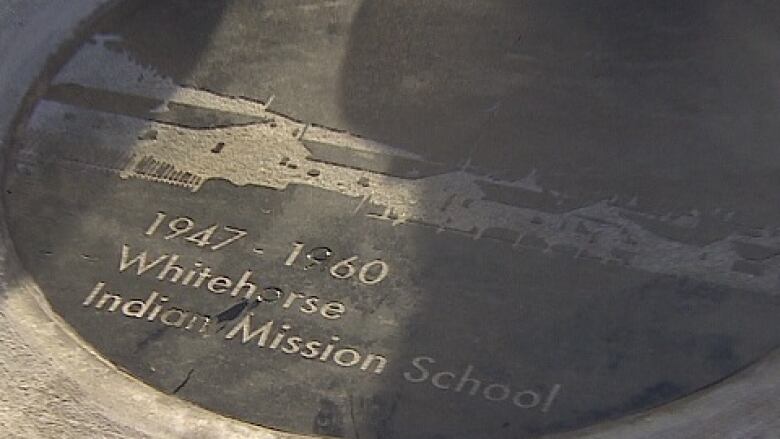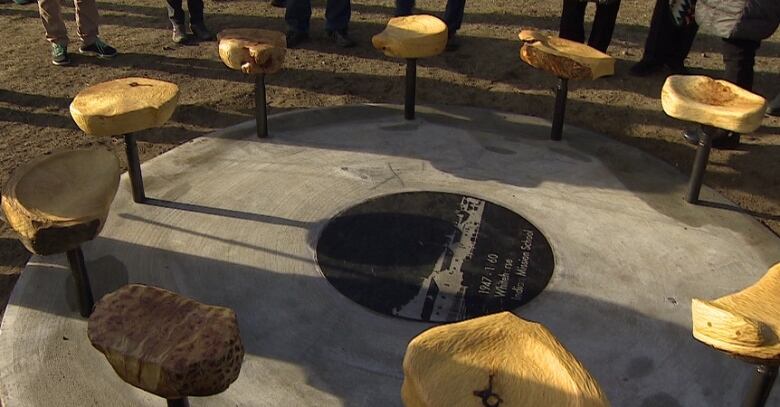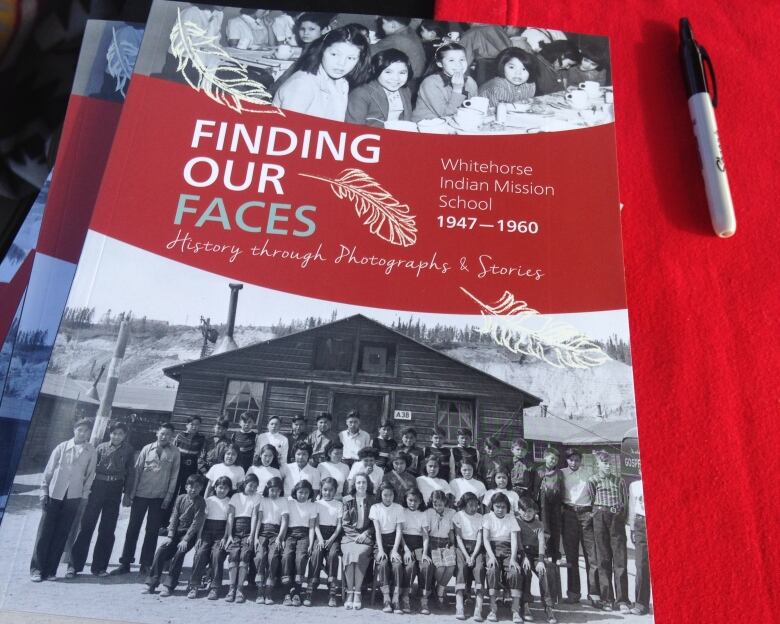'Join the circle': Monument invites conversation about Yukon residential school
Monument honours former students of the Whitehorse Indian Mission School

A monument unveiled on the Whitehorse waterfront on Thursday offers a place for people to sit and reflect on the residential school history of the Yukon and Canada.

It honours former students of the Whitehorse Indian Mission School, which operated from 1947 to 1960.
"It's an overwhelming feeling," said Barb Fred, Kwanlin Dun First Nation elder and a former student at the school, about Thursday's unveiling ceremony. "For me, I'm shaking because I can't believe that we're actually doing this."
Fred was among the more than 100 former students, politicians andmembers of the public who turned out to mark the event.
Artist Ken Anderson designed the monument. The Teslin Tlingit Council member met with formerstudents to learn about their vision for the project.
The end product includesnine wooden stools in a circular formation on a concrete block, around anetching of the former school.

"Each one of the stools is different ... contrary to how it was at school where, as I understand, the kids all got their hair cut the same and all that. This is meant to show that they're all different," said Anderson.
There's one opening in the circle of stools, which Anderson saidis for people who didn't attendresidential school.
"So they can join the circle and be a part of that," he said.
"It's about encouraging understandingand providing an opportunity for education for people to learn about what happened. And also the opportunity for some empathy."

The monument is located on the waterfront, behind the Old Fire Hall.
Minister responsible for the Women's Directorate Jeanie Dendys told the crowd it's no coincidence the monument is beside the water.
"It's a healing place, right beside the water, where you can sit and hear the water flow by and be on this very sacred land that we enjoy every day," she said.
She said people visiting Whitehorse from around the world will have a chance to sit at the monument and gain awareness about residential school.

The ceremony was emotional for many, includingKwanlin Dun Chief Doris Bill.
She said she has been asked if there was anything positive about residential school. Bill said she can only think of onegood thing.
"In the end, it bound us all together," Bill said. "It brought us together in love, in friendship, in understanding. And we all remember. It's good that we remember, because remembering is the truthand that truth hasfinally beentold."
The monument provides a place for former students to gather and remember, in addition to the public.
"It's something that we never forget," said Barb Fred. "We share sometimes some good memories, other times some of the hard times that we had.
"I'm hoping they [the public] look at the monument and see what it's meaning is. Those not sure will take the time to find the history and learn more of what really happened."
Photo book unveiled
The second edition of Finding our Faces was also distributed at the event. The book documents photos and stories from students who attended the school.
AdelineWebber, a former student, saidafter the first book was publishedthree years ago, people started pulling out more photos, creating the need for a second book.

Webber saidmany people don't know about Whitehorse's residential school.
"It's important to provide this history that we did have a residential school here in Whitehorse," she said.
The school was located on 4 Avenue, across from where the Coast High Country Inn stands today.












_(720p).jpg)


 OFFICIAL HD MUSIC VIDEO.jpg)
.jpg)



























































































